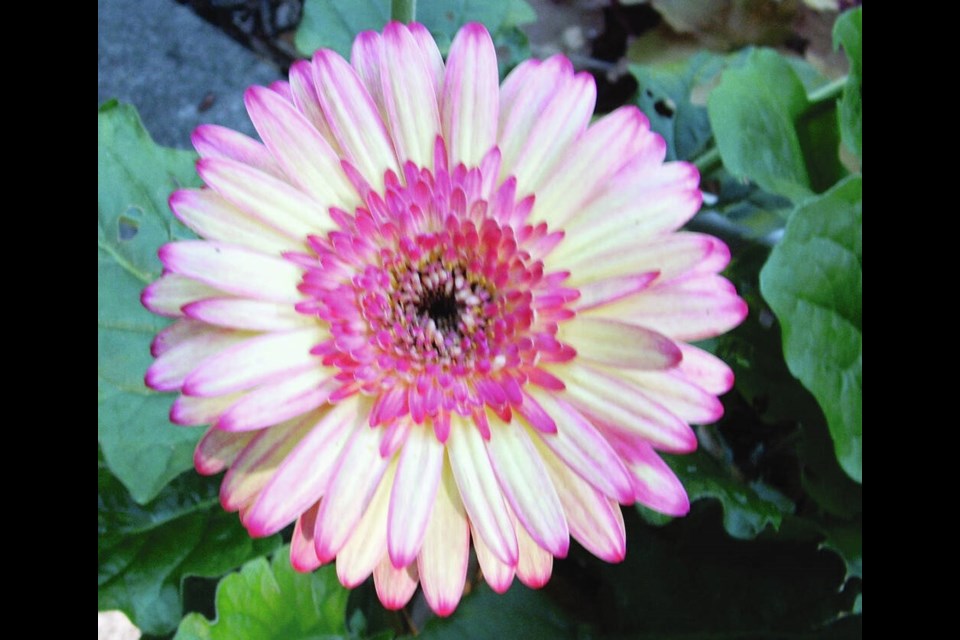Dear Helen: I have been growing and over-wintering gerbera daisy plants, with limited success. I bring them indoors, usually in late October, place them in some light and keep them watered. They stay green and sometimes even produce blooms, but when I put them out in the spring they tend to almost die back before they begin growing again. This year, it was almost August before they became lush plants and began producing flowers.
C.M.
I’ve only ever grown gerberas as annuals, as most people do. The plants are tender perennials native to South Africa. They can be over-wintered in cool but frost-free places, in bright light. Watering can be tricky, especially in winter, when watering needs to be significantly reduced enough to keep the soil just barely moistened.
Too much watering when the plants are not actively growing and flowering can set them back, as can burying the plant crowns, which should be kept at least slightly above soil level. Ideal winter temperatures are in the 13 to 15 C range.
New gerbera plants are fairly easy to produce from seed. Two Canadian sources, Veseys and Stokes, list gerbera seed. I’ve grown the plants from seed, making the indoor sowing in January or early February. I’m thinking of growing Majorette (Stokes Seeds) next year. It’s a mixture of seven colours on plants 20 to 25 cm high.
Dear Helen: Is there a reference available that pictures common pests and diseases? I often come across a particular type of leaf damage or an insect I’m unfamiliar with. It would be helpful to have access to a photo gallery that would help in identification
P.A.
There is a useful photo directory of common local insect pests and diseases on Linda Gilkeson’s website (lindagilkeson.com). On the left hand side of the Home page, click on Pest and Disease Images.
Insect pests are grouped according to the type of damage: Leaf chewers like cabbage worm, sucking insects (aphids, scales), root feeders (carrot rust fly). There is a list of pests on fruit, such as apple maggot, and of plant diseases including diseases of foliage, fruit, and roots. A list of beneficial species is useful as a guide to recognizing and preserving these gardeners’ helpers.
Not all problems are insect of disease issues. A list of “Disorders” includes common problems such as sunscald, blossom end rot and pollination troubles.
Dear Helen: I read your end-of-October column describing a cluster of “volunteer” broad bean plants. Be thankful you got some plants. For some reason, my last two years of seeding broad beans in the fall produced no germination at all.
M.H.
I realize that fall seeding of broad beans is tradition with some gardeners. I’ve never used that timing, opting instead to aim for seedings as early as possible in the year. Perhaps I’ve just been fortunate, but in the past few years, every seed I planted has germinated and developed into a productive plant — from an outdoor seeding made usually in February, but sometimes January if conditions permit.
Whenever the subject of broad beans arises, I recall a visitor to my garden. He was in his 90s. He told me that he always planted broad beans on Christmas day, and again in March. The two seedings produced at the same time but the Christmas planting yielded more, he thought perhaps because of the extra time allowed for more extensive root systems to develop.
Dear Helen: Thanks for the advice to place corrugated cardboard around the trunks of my apple trees. I now actually get some edible fruit. My question: Do I leave the banding on the trees until next spring and then renew the cardboard?
P.F.
You can remove the cardboard banding. Coddling moth larvae will be setting up to overwinter under leaf litter and loose bark, and in crevices.
Set up the bands again in early June, to trap larvae as they move down the trunk to spin cocoons that will produce another generation of the pest. The bands need to be checked weekly to remove and destroy cocoons.
Fresh bands in mid-July will trap another generation. Keep checking for and destroying cocoons and replacing the bands as needed with fresh ones until late September, to trap as many as possible of the last generation.



